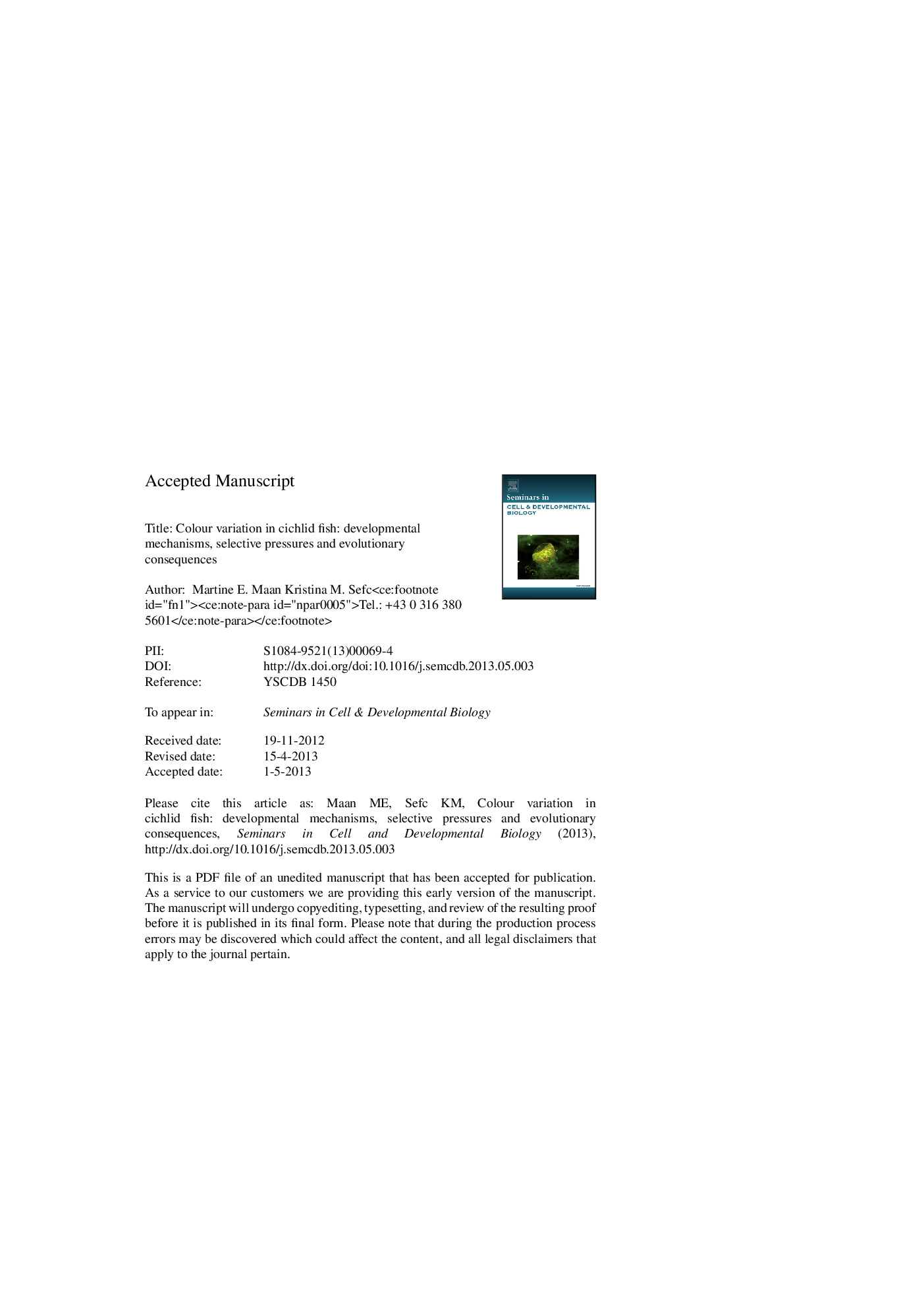| Article ID | Journal | Published Year | Pages | File Type |
|---|---|---|---|---|
| 8480838 | Seminars in Cell & Developmental Biology | 2013 | 31 Pages |
Abstract
Cichlid fishes constitute one of the most species-rich families of vertebrates. In addition to complex social behaviour and morphological versatility, they are characterised by extensive diversity in colouration, both within and between species. Here, we review the cellular and molecular mechanisms underlying colour variation in this group and the selective pressures responsible for the observed variation. We specifically address the evidence for the hypothesis that divergence in colouration is associated with the evolution of reproductive isolation between lineages. While we conclude that cichlid colours are excellent models for understanding the role of animal communication in species divergence, we also identify taxonomic and methodological biases in the current research effort. We suggest that the integration of genomic approaches with ecological and behavioural studies, across the entire cichlid family and beyond it, will contribute to the utility of the cichlid model system for understanding the evolution of biological diversity.
Related Topics
Life Sciences
Biochemistry, Genetics and Molecular Biology
Cell Biology
Authors
Martine E. Maan, Kristina M. Sefc,
